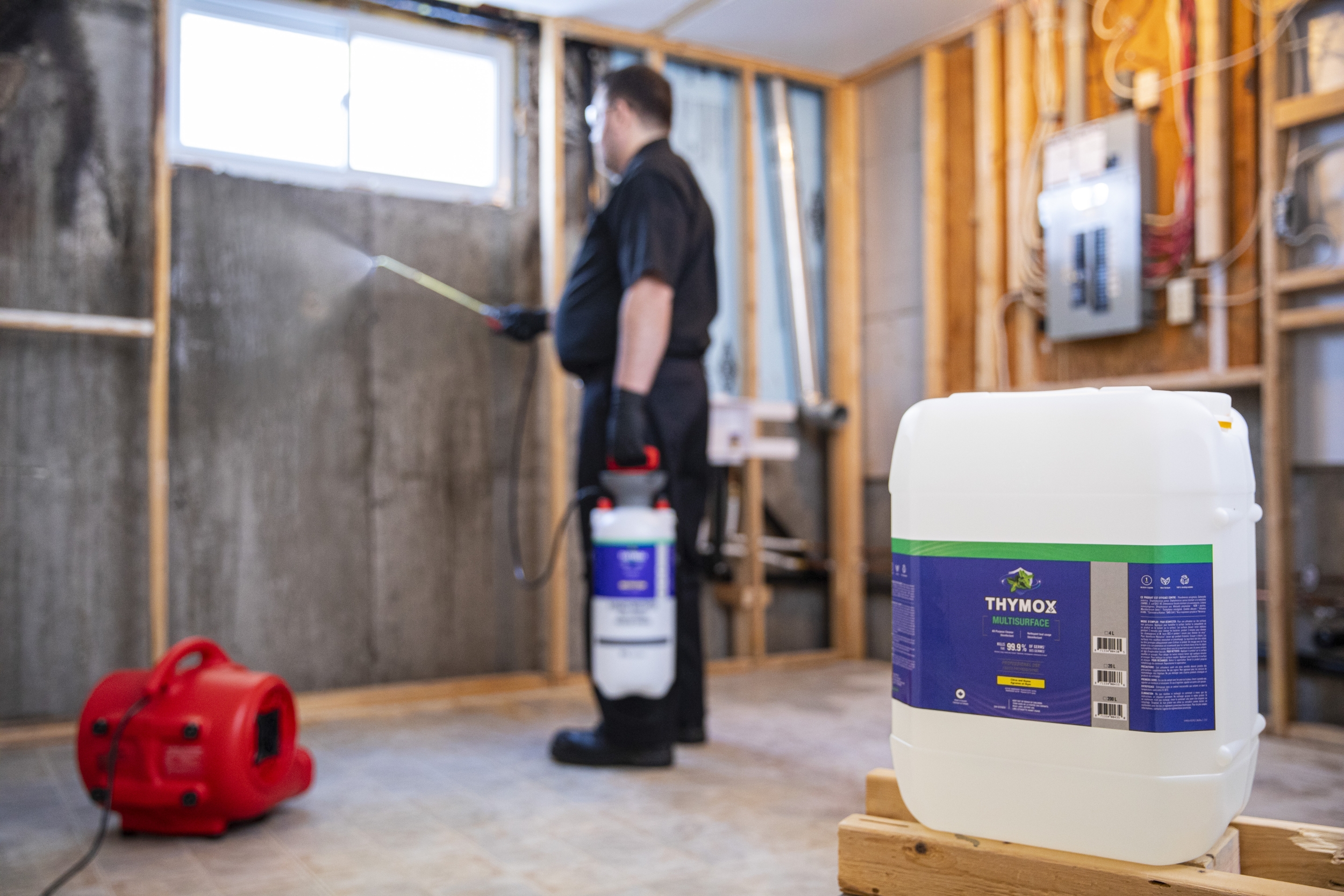Cleaning Up After a Disaster: The Right Product for Water Damage

Water damage in homes as well as public, commercial and industrial buildings is a destructive occurrence that calls for a speedy response. Of course, when it comes to water damage, the first thing that comes to mind is flooding. But damage can also be caused by several other situations.
Water infiltration in foundations, ceilings and roofs as well as sewer backups, broken pipes caused by wear and tear, and extreme cold weather also cause serious problems for buildings. And their consequences are not always immediately visible.
The key with all types of water damage is to act fast and get the emergency work underway. In addition to detecting and repairing the water or moisture problem, a cleanup is required. Water damage in buildings produces a great deal of dirt and grime, sometimes resulting in odours. But most importantly, various moulds harmful to materials and human health are likely to develop—and they must be removed.
This is where Thymox can help. Professional-grade Thymox MultiSurface products are versatile, non-toxic and environmentally friendly. They disinfect, clean, sanitize and deodorize spaces, surfaces and objects that have been contaminated by water. In addition, they destroy mould, while also killing other harmful germs.
What to do in case of water damage
As the owner or manager of a residential, commercial, institutional or industrial building, you have a duty to care for your premises. You also have a duty to keep them safe in order to ensure the well-being and health of the occupants.
Immediately after discovering water damage, it is recommended that you:
1- Contact your insurer
2- Meet with a claims adjuster
3- Plan emergency work
4- Manage risks by decontaminating spaces and materials (eliminate germs, odours and moulds)
What to watch out for and what to clean
Once the cause of the problem has been identified, it’s time to examine the damage. Warped, green or black stained materials may indicate the presence of mould. But sometimes mould also hides behind the materials. It may be detected by the presence of earthy, musty or stale odours; some moulds, however, produce no odours at all.
It is essential to check for the presence of mould. If mould is present, the action to take depends on the extent of the mould, which falls into three categories. Category 1 applies to an isolated area of less than 1 m². Category 2 applies to an average isolated area of more than 1 m², but less than 10 m². And category 3 applies to a large continuous area of more of than 10 m².
All three of these categories require consideration; when in doubt, or when a serious problem is suspected, an IICRC certified professional should be contacted. In categories 2 and 3, materials that have not been removed must be thoroughly and methodically disinfected. This is the time to use broad-spectrum biocides, which destroy viruses, bacteria and moulds. Yet these products are often toxic and must be used with great care. And, usually, additional products are needed to control the odours. In turn, this means materials’ compatibility with these additional cleaning products will have to be checked in order to avoid damaging any materials.
With theThymox product line, users can avoid toxicity and the need to use multiple other products. This greatly simplifies disinfection work.
Thymox MultiSurface: A best in class product for water damage
Thymox MultiSurface is a broad-spectrum disinfectant that is non-toxic to both the user and the environment. It kills 99.9% of bacteria, viruses, moulds and fungi. And it does so very quickly.
In addition to thoroughly disinfecting, it cleans the dirt and grime left behind by water damage and neutralizes odours. Its active ingredient, thymol, originates from thyme and leaves behind a scent which, unlike the fumes of toxic products, is non-irritating.
Thymox MultiSurface is more versatile than any other disinfectant product. This is in addition to being faster, more powerful, and environmentally friendly!